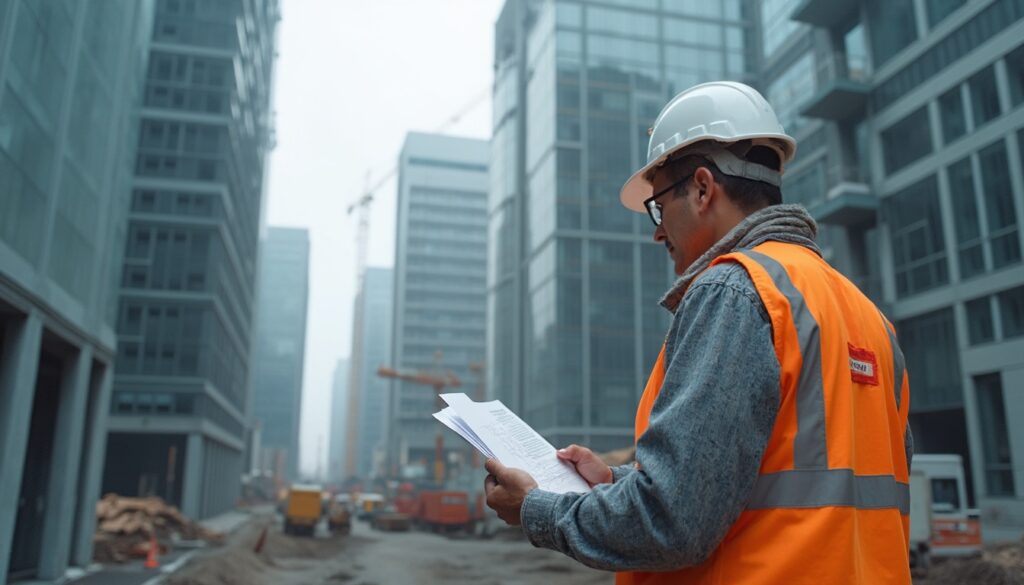Understand the legal significance of construction acceptance according to VOB/B and BGB
The construction acceptance marks the critical turning point in every construction project. With it, you as the client confirm that the contractor’s performance has been essentially delivered in accordance with the contract. This act is regulated in § 640 BGB and § 12 VOB/B and has at least three significant legal consequences. First, the contractor’s payment becomes due. Second, upon acceptance, the limitation period for defect claims begins, which is usually four years according to VOB/B. Third, the burden of proof shifts: Before acceptance, the contractor must prove that their work is free of defects; thereafter, you as the client must prove a defect. An overlooked defect during acceptance can mean losing the right to demand corrections. Therefore, careful preparation is not an option but an economic necessity to avoid financial disadvantages of up to 30% of the cost of remedying defects. Distinguishing the forms of acceptance is an important first step.
Forms of acceptance: Formal, fictitious, or implied?
The law recognizes various ways in which acceptance can occur, each presenting different requirements for you. The safest method is formal acceptance, where both parties agree on a date and prepare a joint Construction protocol This creates maximum legal certainty for all parties involved. Much riskier are the fictitious and implied acceptances. A fictitious acceptance according to § 12 Abs. 5 VOB/B occurs automatically if the client does not accept the performance within 12 working days after notification of completion. If the client begins to use the building, this period shortens to just 6 working days. The payment of the final invoice without reservation can be considered as an implied, thus tacit, acceptance. To avoid unintentional acceptance, proactive action and clear communication are essential. A structured process helps you maintain control and avoid falling into the trap of automatic acceptance.
The ultimate checklist for your legal acceptance in construction
Thorough preparation is key to a successful acceptance. With a systematic checklist, you ensure that no detail is overlooked, saving you at least 15% in potential correction costs later. The following list divides the inspection into three logical phases:
Phase 1: Preparation of the acceptance date
- Schedule the appointment: Arrange the appointment at least two weeks in advance and plan sufficient time during daylight.
- Prepare documents: Have all relevant documents such as the construction contract, specifications, plans, and the Construction phase checklist ready.
- Invite participants: Ensure that all key individuals (construction manager, specialist planner, possibly an expert) are present.
- Bring tools: Pack a measuring tape, level, flashlight, and a charger for your smartphone.
Phase 2: Conducting the walk-through
- Proceed systematically: Inspect the property room by room and component by component, from outside to inside.
- Test functions: Operate all switches, open all windows and doors, check water connections and heating.
- Document defects precisely: Record each defect with a photo, precise location, and a brief description in the digital defect management.
- Explain reservations: State clear reservations in the protocol for known but unresolved defects or penalties.
Phase 3: Follow-up and protocol
- Finalize the protocol: Summarize all points, defects, reservations, and deadlines for remedying defects in the protocol.
- Collect signatures: Have the protocol signed by all participants. A digital signature speeds up this process by up to 70%.
- Distribute documentation: Provide all participants with a copy of the protocol immediately after the appointment.
This structured approach minimizes the risk of errors and forms the basis for legally secure documentation.
The acceptance protocol: Your most important piece of evidence
The acceptance protocol is the most important document of the entire acceptance process and has high evidential power in court. It not only records the result of the walk-through but also defines the remaining obligations. A defect not recorded in the protocol is deemed accepted by the client, making subsequent claims more difficult by over 50%. Each defect must be described unequivocally and assigned a clear deadline for remedy. Vague wording like “small scratches on the door” is insufficient; instead, “approximately 5 cm long scratch at hip height on the outside of the apartment door sheet 3.02” is required. With Valoon, you capture such details including a photo and timestamp directly on-site, increasing accuracy by at least 90% and eliminating manual rework in the office. This turns the obligation to document into an efficient process that sets the course for the next steps.
After acceptance: Defect claims and revision documents
With successful acceptance, the warranty phase begins. If hidden defects arise during this time, you must report them immediately. A precise defect notification according to VOB is crucial to protect your claims. A comprehensive acceptance protocol strengthens your position as it proves the condition at the time of risk transfer. Simultaneously, the contractor is obliged to provide you with all revision documents according to VOB These include operating manuals, test protocols, and inventory plans necessary for the operation and maintenance of the building. The complete handover of these documents is often a contractual requirement for the payment of the final installment. A central digital system like Valoon, where all documents from the notification of completion to the protocol are stored, significantly simplifies this final step and reduces administrative effort by up to 10 hours per project.
Your advantage with Valoon: Simple, legally secure, and efficient
The complexity of legal acceptance in construction requires flawless organization and documentation. Manual efforts with clipboard and camera can lead to information losses and legal risks that may cost you five-figure sums annually. Valoon solves this problem by consolidating all communication and documentation on the platform your employees already use daily: WhatsApp. Create your digital checklist for legal acceptance in construction, document defects with photos and voice messages, and automatically generate a legally secure protocol. This not only saves at least 50% of the time for follow-up but also ensures a complete chain of evidence. The platform is completely free for your on-site team and requires zero training effort. Switch now to construction documentation that is as easy as sending a message. Book your free demo and experience how uncomplicated legal security can be.
More Links
Wikipedia provides comprehensive information on construction acceptance, a critical step in the construction process where the client accepts the finished building.
Das Federal Ministry of Justice provides the Building Code (BauGB), which forms the basis of German urban planning law.
Haufe provides detailed information on warranties and defect rights in construction contracts.
Das German Institute for Civil Engineering (DIBt) is the technical approval authority for construction products and types of construction in Germany.
Der German Bar Association provides an article on architects’ law.
Der Federal Gazette is the official publication organ of the Federal Republic of Germany.
Die Federal Chamber of Architects (BAK) informs about architects’ contract law.
Die German Chamber of Industry and Commerce (DIHK) provides information on building regulations.
FAQ
How does Valoon specifically help in creating a checklist for legal acceptance in construction?
With Valoon, you can create digital checklist templates and reuse them for every project. During the walk-through, you check off items directly on your smartphone, add photos and voice notes as evidence, ensuring that no item is forgotten. Everything is automatically summarized in a clean protocol.
Is the documentation created with Valoon legally secure?
Yes. All entries, photos, and documents are stamped with an unalterable timestamp and linked to the respective project and editor. This creates a seamless and legally-protected documentation that meets the requirements of VOB and BGB and holds up in court.
Do my employees on-site need to install a new app?
No, and that’s the biggest advantage. Your team communicates as usual via WhatsApp. Valoon works in the background and automatically organizes all sent information, photos, and documents. This brings the acceptance hurdle down to zero.
What is the cost of using Valoon for my construction site team?
For on-site employees communicating via WhatsApp, using Valoon is completely free. Costs only apply to users in the office who use the web-based platform for managing, evaluating, and administering projects.
Can I also have the protocol generated directly with Valoon?
Yes. After the walk-through is complete, you can generate a complete acceptance protocol in PDF format with just one click. This includes all recorded items, photos, comments, and the digital signatures of the participants, saving you hours of rework.
What documents can I store in Valoon?
You can centrally store all project-relevant documents in Valoon. This includes construction plans, specifications, building permits, expert reports, the notification of completion, and eventually also the complete revision documents. This way, you always have access to all important information anytime and anywhere.








